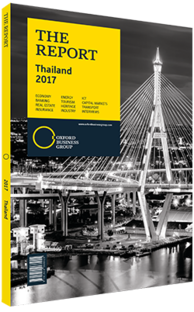Suthiphon Thaveechaiyagarn, Secretary-General, Office of Insurance Commission: Interview

Interview: Suthiphon Thaveechaiyagarn
What level of regulatory reform is necessary in order to prepare the insurance sector for high growth in digital distribution channels?
SUTHIPHON THAVEECHAIYAGARN: Since the bloom of internet usage in Thailand we have seen various platforms that help consumers gain a better understanding of insurance and help them choose an appropriate level of coverage. Financial technology related to the industry includes the creation of platforms to accelerate consumer-to-insurer processes, including quoting premiums and managing claim payments. These shorten the distance between consumers and insurers, creating loyalty and driving stable growth. With all this technology becoming available to the public, we expect to see a shift in distribution channels from a reliance on agents and brokers to various alternative channels. To account for this, we have issued regulation on e-insurance, which prescribes online activities from sales to claim payments. We also are in the process of considering a regulatory sandbox for licensed insurers to test their new products and services in a limited environment. Furthermore, transparency of insurance activities will be closely monitored and analysed through the Insurance Bureau System.
This landscape shift will increase the availability of public insurance data, creating more opportunities for both insurers and the insured to utilise them in their own interest. As the sector regulator, our role is not only to protect consumers’ rights, but also to facilitate growth in the industry, and we are continuously renewing our regulations and preparing for future changes.
How will the second phase of the risk-based capital framework (RBC 2) serve to bolster the financial strength of the sector?
SUTHIPHON: In developing RBC 2 the Office of Insurance Commission has three main objectives. First, we are looking to add coverage of additional major risk categories in the required capital, as the current RBC framework only covers insurance risk, market risk, credit risk, concentration risk and surrender risk. We propose covering operational risk and partial group risk in the second phase as well. The second objective is to increase confidence in the framework, which is currently in the 95th percentile. RBC 2 will aim to raise the confidence level to the 99.5th percentile as a means to enhance the stability and solvency of the industry. Third, we intend to further align our framework with international standards. These changes should allow the sector to have more awareness of risk and risk management, which will ultimately build a more financially robust and risk-resistant insurance industry.
How is consumer education being promoted to grow the domestic insurance market?
SUTHIPHON: The insurance penetration rate in Thailand stands at 7.84% and the insurance density stands at $314. This indicates that we still have a low level of people who are insured, and that most of those with coverage are medium- to high-income residents living in metropolitan areas. One of the reasons that the nation still has low rates of insurance is the general public’s lack of knowledge and understanding about insurance – so we recognise the need to develop insurance knowledge and insurance products simultaneously in order to meet the needs of those who remain uninsured.
Outlined in the third Insurance Development Plan 2016-20 is a major measure promoting insurance and general financial literacy among population segments such as those with low incomes, youth, agricultural workers, entrepreneurs and the disabled.
Training sessions and seminars will be held in all regions of the nation, and coordination between government and private organisations will be streamlined. Through developing new insurance products, such as the recently launched Microinsurance 200, which has an annual premium of BT200 ($5.63), we believe that tailor-made solutions can rapidly increase consumer awareness and eventually grow the domestic market.
You have reached the limit of premium articles you can view for free.
Choose from the options below to purchase print or digital editions of our Reports. You can also purchase a website subscription giving you unlimited access to all of our Reports online for 12 months.
If you have already purchased this Report or have a website subscription, please login to continue.

